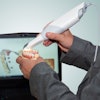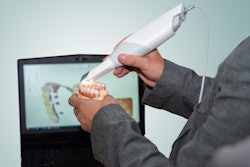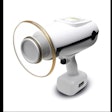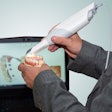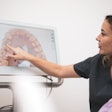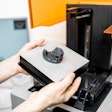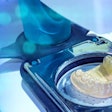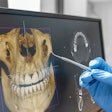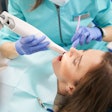Dental patients may be less satisfied with their restorations after viewing intraoral scanning (IOS)-generated images and using magnifying mirrors. The study was published recently in the Digital Dentistry Journal.
Furthermore, digital tools and magnification enhance examination and communication, but IOS-enlarged views may reveal minor discrepancies, affecting patients' perceptions, the authors wrote.
"Patients can be more critical of the aesthetics of their resin composite restorations when viewing them through IOS images and magnifying mirrors," wrote the authors, led by Dr. Marianna Soares Nogueira Borges, MSc, of the University of São Paulo Ribeirão Preto School of Dentistry in Brazil (Dig Dent J, March 19, 2025, 100004).
To compare IOS with indirect visual observation in assessing patients' perceptions of their resin composite restorations, 41 adult participants evaluated their anterior and posterior restorations using a regular mirror followed by a magnifying mirror. Initially, anamnesis and dental prophylaxis were performed, they wrote.
Then participants were seated upright in a dental chair and instructed to examine their restorations using a standard mirror, a magnifying mirror, and later, an IOS. After one week, their restorations were scanned and viewed on an IOS touchscreen monitor for reassessment. Patients rated their satisfaction on a scale from 1 (totally satisfied) to 5 (totally unsatisfied).
Patients were most satisfied when using a regular mirror, with score 2 being the most common. Satisfaction decreased when using magnifying mirrors, as reflected in the higher frequency of score 3 compared to the regular mirror.
When comparing regular and magnifying mirrors, inadequate color and contour were the most cited concerns, indicating a tendency for greater scrutiny, they wrote.
With IOS visualization, dissatisfaction increased further, with significantly higher frequencies of complaints about inappropriate color and contour, stains, and poor brightness.
However, the study had limitations. The results apply specifically to the IOS used in this study, and similar research in the field remains limited, the authors added.
"The detailed and enlarged views provided by the IOS allowed patients to detect minor discrepancies that might not be noticeable under normal conditions, influencing their perception about their dental conditions," they concluded.




